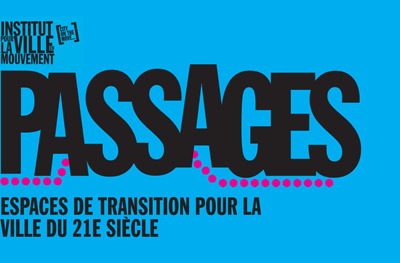
CALL FOR INNOVATION!
NEGOCIATED PASSAGE : DEVISING SYSTEMS OF GOVERNANCE FOR SMALL-SCALE MOBILITY
The reason why interventions are not carried out on passages, despite the fact that they are often simple, quick and inexpensive, is often because their governance is not clear. No one may know who the passage belongs to, who has the power to decide, who can finance any work, who can legitimately give an opinion. In addition, it is shared by the inhabitants, local people, walkers… So how can passages be treated as democratic, collaborative spaces?
RIGHT OF PASSAGE: QUESTIONING METHODS OF APPROPRIATION
More and more, passages are restricted to residents, payers, children, the disabled… This appropriation generates a form of ownership that can imperil the public character of the passage. Does this mean that work needs to be done to recapture these public spaces of mobility?
PASSAGE EVENT
As a crossing between two places, two atmospheres, the passage is often a too ordinary urban experience, which could be infused with identity by special lighting, original animation, artistic intervention, the introduction – whether spontaneously or not – of a specific urban ambience. It is by making it a sensory and artistic experience, a hybridisation of its social, functional and sensory dimensions, that the passage can become a journey.
COHABITED PASSAGE
As a social space, the passage needs to be able to reconcile and sometimes pacify different uses: local people, the homeless, passers-by, squatters, shopkeepers, taggers, artists,… Through their permeability, passages foster encounters between different people, bring the traveller into contact with the local.
MANUFACTURED PASSAGE
These little spaces are manufactured, evolve over time. How can these different realities – informal and institutional, urgency and immediacy, often sustainable improvisation and long planning timescales – be reconciled?
TEMPORARY PASSAGE
A contemporary approach to the passage also explores its capacity to adapt, its resilience, its versatility, varying with the time of day, the day of the week, the seasons, the constantly changing movements of individuals.
SMART PASSAGE, LEGIBLE PASSAGE
All sorts of technological objects – whether already existing or future – associated with passages can be imagined: virtual guides, dedicated mobility apps, personalised signage, online objects, smart tolls,… What innovations exist in this sphere? Are they accessible to all citizens? Can they contribute to the mobility of brittle bodies? What do they suggest for possible future changes of form?
AUGMENTED PASSAGE
The passage is often seen simply as a technical tool designed to increase convenience or speed. How can new technologies, new materials, be used to create new passage entities? Robot passages, mobile passages, invisible passages… Apart from the technical object, how can the degree of “passageness” be increased, in its social, sensory and digital dimensions? How can we increase the resources a passage – even the smallest one – can offer?
NEW PASSAGE TYPOLOGIES
While the bridges and walkways that span a void offer a view that is inherently attractive, in blind passages (underground or lacking side exits), the activities and animation are concentrated at the entrance and exit points. In this case, the segment of passage is a tunnel, a congested non-place that people want to move through as quickly as possible, without lingering. Innovative typologies can be used to redesign blind passages by opening up unexpected views. A passage may, for example, be introduced into an abandoned infrastructure, which acquires a second life through the process of reinterpretation.
